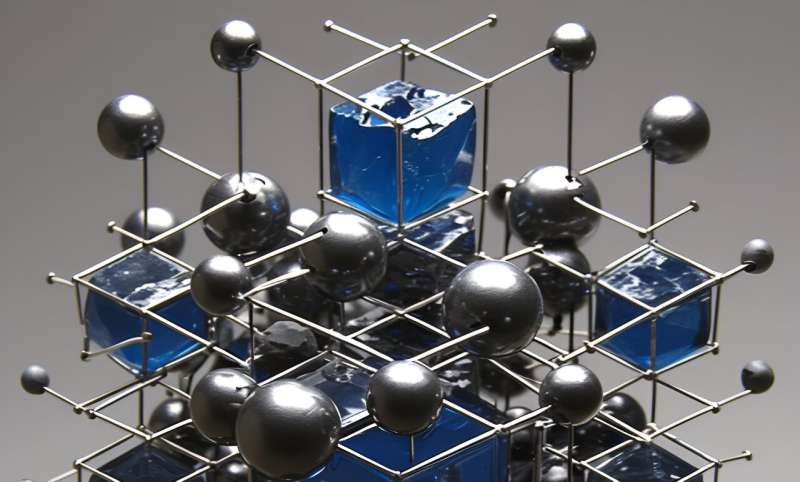
Researchers from Skoltech and their colleagues have improved the properties of a carbon-based electrode material by exposing it to air plasma. Such treatment turned out to enhance electrode performance, which is the limiting factor for high-tech energy sources—particularly fuel cells.
These are a promising technology for cleaner and more efficient electrical power generation. Published in the Journal of Electroanalytical Chemistry, the study even shows that the cheaper-to-make air plasma is better-suited for processing the carbon material than pure nitrogen or oxygen plasma.
One way to make burning natural gas cleaner is to use fuel cells. These are devices that technically do not burn the fuel but rather oxidize it in a different manner. That process is friendlier to the environment, because it produces more useful power, less greenhouse gases and emits no pollutants such as nitrogen oxides, sulfur dioxide, and aerosol particles.
Fuel cells are used to power industrial facilities and homes, particularly in remote off-grid locations and where backup power is needed. Another application is generating electricity for space probes, submarines, industrial trucks operating in refrigerated spaces, and the more conventional vehicles such as cars, buses, trains, and boats. The main advantages of the technology are its efficiency, resilience, and sustainability.
The biggest challenges are coping with the high operating temperature of fuel cells and refining the advanced materials used in their three principal components: the positive and negative electrodes and the ceramic electrolyte layer between them, which facilitates the chemical reaction that yields useful energy. Previously, Skoltech researchers manufactured an intricately shaped electrolytic component for solid-oxide fuel cells. The new study tinkers with one of the common anode materials to improve it.
"Anodes in solid-oxide fuel cells are made of various forms of carbon, and the catalytic activity of those materials puts a limitation on the rate of the reaction in the cell that supplies power. We seek ways to boost catalytic activity by incorporating foreign atoms, called defects, into the carbon electrode. This is referred to as defect engineering," says the lead author of the study, Assistant Professor Stanislav Evlashin of Skoltech Materials.
"In this study, we introduce oxygen and nitrogen atoms in various proportions into highly oriented pyrolytic graphite and one other carbon-based material by exposing them to plasma of distinct compositions."
To modify the electrode material, the team subjected it to a direct current discharge that formed plasma in a chamber filled alternately with pure nitrogen, pure oxygen, and ordinary air. The latter of the three performed the best, which is good news because the pure gases are obviously more expensive.
In general, this defect engineering approach is more economical than the existing alternatives: carbon doped with ruthenium oxide or with platinum. The new technique is also handy in that the oxygen and nitrogen inclusions can be introduced during the original material's manufacture, without the need for an additional post-processing stage, which is necessary for ruthenium oxide and platinum doping.
As far as the effect on catalytic activity goes, plasma treatment improved the material's properties enough to put electrodes made of it fairly close to those using noble metals.
The findings show that the defect engineering approach can significantly improve the resulting electrochemical characteristics of the material without incorporating additional materials or steps of production. Once the researchers learn to insert defects during the process of material synthesis in a controlled manner, the produced materials can immediately be used in the manufacture of current sources.
More information: S.A. Evlashin et al, Influence of plasma treatment on the oxygen reduction reaction performance of graphene-based materials, Journal of Electroanalytical Chemistry (2024). DOI: 10.1016/j.jelechem.2024.118091
Citation: Plasma treatment enhances electrode material for fuel cells in industry, homes and vehicles (2024, April 22) retrieved 22 April 2024 from https://techxplore.com/news/2024-04-plasma-treatment-electrode-material-fuel.html
This document is subject to copyright. Apart from any fair dealing for the purpose of private study or research, no part may be reproduced without the written permission. The content is provided for information purposes only.
